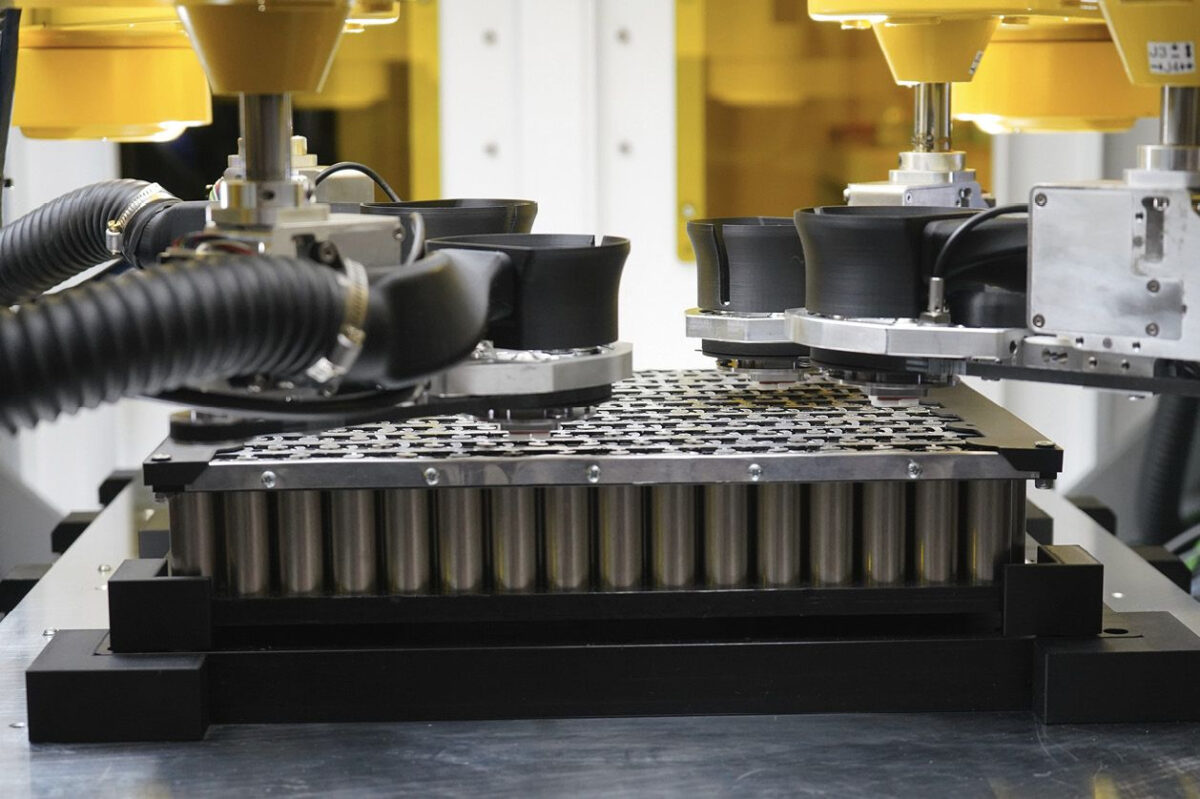Ultrasonic bonding has long been the method of choice for connecting photovoltaic cells, tabs, and busbars in arrays and modules. This technology produces high-quality connections and manufacturers haven’t met its limitations at current production volumes.
The approach, however, cannot keep up with higher production rates. Major electric-vehicle battery makers have already switched from ultrasonic bonding to laser welding to scale up production. As solar power is becoming increasingly important for sustainable energy solutions, PV module manufacturers also need to start thinking about solutions to scale up production in the near future.
Why change?
Laser welding is a high-speed, non-contact process that uses the energy of a laser beam to create welds between surfaces. It can be used to optimize how solar cells, tabs, and busbars are interconnected in photovoltaic arrays and modules. Here are the reasons why laser welding is up to 10 times faster than ultrasonic bonding.
Mechanical constraints
With ultrasonic bonding, a single weld is done within a few hundred milliseconds. Mechanical movements between each weld add time to the process. The bonding tool moves in the X, Y, and Z axes to position itself precisely above each target.
With laser welding, the laser system does not need to move for every single weld. Ultra-fast mirrors located in the laser head rotate as needed to precisely position the laser beam. This allows the laser to perform all welds within its field of view (typically 40 cm by 40 cm) from a single location. It only needs to be moved if there are cells beyond its field of view. Even in these cases, the part itself could be moved instead.
Ultrasonic bonding
With all aspects considered, the average speed of ultrasonic bonding is about 500 milliseconds per weld. Laser welding cuts that time down to an average of 50 milliseconds per weld. This means that if you have 192 connections to make, in a 96-cell PV module, you can go from over a minute per module to just a few seconds. Ultrasonic bonding at 500 milliseconds per weld will take 96 seconds to make all the connections in a 96-cell module. Laser welding, at 50 milliseconds per weld, will require only 9.6 seconds.
Power of light
Laser welding uses the power of light to melt and create a strong connection between materials. By focusing the laser beam on the welding area, it generates controlled heat that causes material to melt and form a bond.
When the laser beam hits the material surface, a portion of its energy is absorbed by the surface and the rest is reflected. A wide range of parameters can be optimized to control the welding process and adapt it to each application: the wavelength, spot size, intensity, and beam quality are just a few of the examples.
A clamping tool is needed to ensure there is no gap between the joined components. The surfaces to be welded can be clamped either by design or by an additional clamping tool to ensure good zero-gap welds. Global clamping with a fixture or a robotic clamping tip can be used to keep up with the laser welding speed. This precise control allows for consistent and high-quality welds in various materials and applications.
Greener future
As clean energy becomes increasingly important to meet growing energy demand, the photovoltaic industry is approaching a critical point. The need for scalability will put pressure on production operations and cycle times. Laser welding technology offers a remarkable solution to meet this challenge head on, enabling faster and more cost-effective production and ultimately contributing to a greener and more sustainable world.
 About the author: Keven Tremblay, product manager for laser welding solutions at Laserax, has extensive experience in electrical design and automation programming. His expertise in programmable logic controller programming, electrical design, and vision systems enables him to understand customer needs and provide optimal industrial solutions.
About the author: Keven Tremblay, product manager for laser welding solutions at Laserax, has extensive experience in electrical design and automation programming. His expertise in programmable logic controller programming, electrical design, and vision systems enables him to understand customer needs and provide optimal industrial solutions.
The views and opinions expressed in this article are the author’s own, and do not necessarily reflect those held by pv magazine.
This content is protected by copyright and may not be reused. If you want to cooperate with us and would like to reuse some of our content, please contact: editors@pv-magazine.com.



1 comment
By submitting this form you agree to pv magazine using your data for the purposes of publishing your comment.
Your personal data will only be disclosed or otherwise transmitted to third parties for the purposes of spam filtering or if this is necessary for technical maintenance of the website. Any other transfer to third parties will not take place unless this is justified on the basis of applicable data protection regulations or if pv magazine is legally obliged to do so.
You may revoke this consent at any time with effect for the future, in which case your personal data will be deleted immediately. Otherwise, your data will be deleted if pv magazine has processed your request or the purpose of data storage is fulfilled.
Further information on data privacy can be found in our Data Protection Policy.